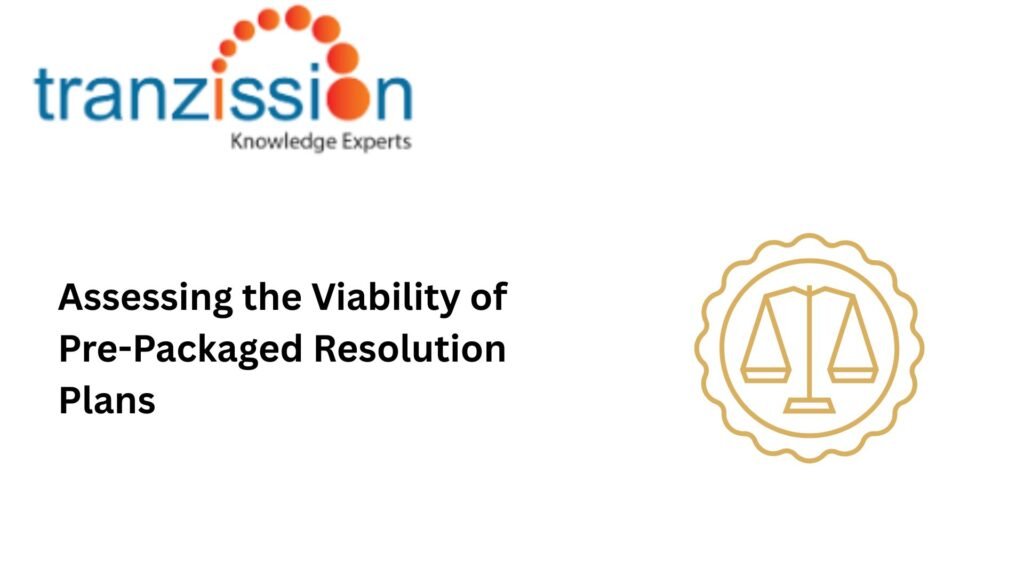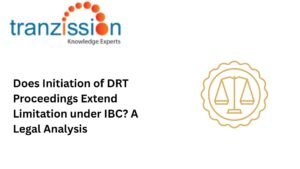
Assessing the Viability of Pre-Packaged Resolution Plans

Table of Contents
The Pre-Packaged Resolution Plans Process (PPIRP) offers a streamlined approach to resolving financial distress, particularly for Micro, Small, and Medium Enterprises (MSMEs) under the Insolvency and Bankruptcy Code, 2016 (“the IBC”). Sections 54A to 54P of the IBC establish the framework for PPIRP. Section 54A specifies the eligibility criteria for a corporate debtor to be eligible for the PPIRP, and section 54B defines the duties of the insolvency professional before the initiation of the PPIRP, ensuring a thorough investigation and analysis of the situation.
Advantages of Pre-Packaged Resolution Plans
PPIRP under the IBC offers several advantages for MSMEs over traditional CIRP:
Time and Cost Efficiency:
It is designed to be more economical than CIRP, as it avoids the needs for a formal insolvency process and minimises traditional costs. By allowing for a quicker resolution, because it mandates that the process be completed in 120 days, compared to the longer timelines of the resolution process. This speed and cost-effectiveness can be crucial for MSMEs that may struggle to afford the lengthy and expensive CIRP.
Debtor-in-Possession Model:
PPIRP allows the company’s existing management to retain control and operational knowledge, potentially facilitating a faster and more effective resolution. This allows MSMEs to benefit from the process while maintaining control of their business.
Confidentiality and Business Continuity:
By allowing the debtor to remain in possession, this process helps preserve the business operations reputation and good will, which is particularly important for MSMEs that rely heavily on local networks and customer relationships. This is an important element for attracting potential investors and ensuring the long-term viability of the business.
Challenges and Limitations of Pre-Packaged Resolution Plans
Despite its advantages, there are legal and procedural hindrances:
Limited Applicability:
As PPIRP is designed for MSMEs, limits its effectiveness for larger firms that could benefit from a similar mechanism. Further, its debtor-centric model prioritises resolution within a strict time frame, which can be challenging for complex cases. This includes limitations on the types of creditors involved, the scope of the process, and potential misuse by debtors.
Eligibility Constraints:
It’s not a general alternative to the corporate insolvency resolution process (CIRP) for all corporate debtors, and there are specific criteria for a company to be eligible, including a default amount of at least Rs. 10 lakhs.
Risk of Misuse:
Due to the debtor-in-possession model, where the existing management retains control during the resolution process. This can lead to potential exploitation by promoters, who might push for unfair haircuts on dues, potentially undermining the interests of other stakeholders.
Comparative Analysis: PPIRP vs. CIRP
| Differential Point | CIRP | PPIRP |
| Applicability and Initiation | Applies to all corporate debtors with defaults exceeding Rs. 1 crore, initiated by financial creditors, operational creditors, or the corporate debtor. | Primarily for MSMEs, initiated by the corporate debtor itself, with defaults exceeding Rs. 10 lakhs. |
| Management Control | Control shifts to the resolution professional (RP) | Existing management retains control, with input from the RP |
| Timeframe | To be completed within 180 days, with a maximum of 330 days. | Maximum timeline of 120 days |
| Stakeholder Participation | Involves a broader range of stakeholders, financial creditors, operational creditors, and other stakeholders. | Focuses on financial creditors and the corporate debtor. |
| Flexibility and cost | Formal judicial process supervised by the NCLT/ NCLAT, more complex and costly | Combination of judicial and non-judicial processes, providing flexibility and lower administrative and legal costs. |
| Resolution plan | Involves a formal resolution submitted by various parties, with the Committee of Creditors (CoC) voting on it. | Includes a pre-packaged plan prepared by the corporate debtor before initiating the process with the approval of the CoC |
Case Studies and Real-World Applications
There are many cases that demonstrate the practical application of PPIRP under the IBC, highlighting its potential and the challenges involved in its implementation. They also underscore the importance of understanding the legal framework and the role of various stakeholders in ensuring a successful resolution. For instance, GCCL Infrastructure and Projects successfully initiated its PPIRP after defaulting on payments in December. 2020. They obtained necessary resolutions from their members, directors’ declarations, and financial creditor approval before filing the application with the NCLT. Enn Tee International, Shri Rajasthan Syntex, and Sudal Industries navigated the Pre-Packaged Resolution Plans, ensuring full payments of operational creditor’s claims, which as a notable achievement.
Future Outlook and Recommendations
It is important to consider out-of-court admission, such as mediation or arbitration, with the NCLT only being informed once it begins, and intervening only when a certain percentage of creditors oppose.
It is recommended to establish clear criteria for rejecting resolution plans, preventing the NCLT from rejecting plans based on the belief that a better plan can be achieved.
It is suggested to establish clear parameters for defining a “significantly better” resolution plan, including the tick size for improvement and time limits for the iteration process.
Conclusion
Pre-Packaged Resolution Plans is a valuable tool for resolving corporate distress in India, particularly for MSMEs. It facilitates pre-negotiated resolution plans, preserving business continuity, and minimizing the risk of litigation. Its flexibility and focus on stakeholder cooperation make it a promising avenue for addressing financial challenges in a market-friendly and efficient manner. Thus, PPIRP role in the insolvency landscape is to provide a streamlined and flexible framework for MSMEs to negotiate and implement resolution plans, ultimately aiming to preserve business continuity and value.
Read more :Role of ESG in Corporate Governance





